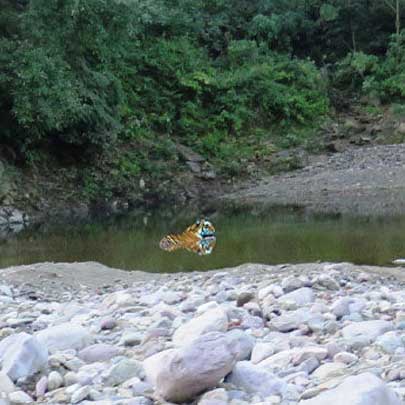How Schools Can Build a Green Culture with Eco Supplies
How Schools Can Build a Green Culture
with Eco Supplies
Creating an environmentally friendly culture in schools is no longer just a trend — it’s a responsibility. Educational institutions have a unique opportunity to nurture eco-conscious habits in students while reducing their own carbon footprint. By adopting eco supplies and sustainable practices, schools can pave the way for a healthier planet and inspire generations to become responsible global citizens.
In this article, we’ll explore practical ways to build a green culture in schools, the importance of using eco-friendly school supplies, and how organizations like Wildlense Eco Foundation are helping promote sustainability in education.
Why Green Culture in Schools Matters

A green school culture benefits both students and the environment. It instills values of conservation, teaches resource management, and shows that every individual can make a difference. Some of the most significant reasons to foster sustainability in schools include:
-
Environmental Responsibility: Schools consume paper, energy, water, and plastics daily. Going green helps minimize waste and pollution.
-
Healthier Learning Environment: Eco-friendly materials and non-toxic supplies create safer classrooms.
-
Cost Savings: Energy-efficient systems, reusable supplies, and waste reduction strategies can cut expenses over time.
-
Student Engagement: Hands-on activities like recycling drives and gardening enhance creativity and leadership skills.
When sustainability is woven into a school’s fabric, students naturally adopt greener habits that last a lifetime.
1. Switch to Eco-Friendly School Supplies
One of the simplest ways to start building a green culture is by replacing conventional products with eco supplies. These are items designed to reduce environmental impact and often made from recycled or biodegradable materials.
Here are some examples:
-
Recycled Paper and Notebooks: Opt for FSC-certified or 100% recycled paper for notebooks, worksheets, and art projects.
-
Plant-Based Pens and Pencils: Biodegradable pens, pencils made from recycled newspaper, and refillable markers help eliminate single-use plastics.
-
Reusable Lunchboxes and Bottles: Encourage students to bring stainless steel or bamboo lunchboxes and water bottles to reduce plastic waste.
-
Non-Toxic Art Materials: Choose water-based paints, natural dyes, and chemical-free glues for creative activities.
By sourcing eco-friendly school supplies from trusted brands or organizations like Wildlense Eco Foundation, schools can ensure quality products while supporting environmental initiatives.
2. Implement a Comprehensive Recycling Program
A recycling initiative is one of the most effective strategies for waste management in schools. To make it successful:
-
Place clearly labeled bins for paper, plastic, glass, and e-waste across the campus.
-
Conduct workshops on how to segregate waste correctly.
-
Collaborate with local recycling companies or NGOs to handle collected materials.
Wildlense Eco Foundation, for instance, offers community outreach programs that guide institutions on setting up efficient waste segregation systems.
3. Reduce Single-Use Plastics
Plastic pollution is a global crisis, and schools can lead by example in cutting down on single-use plastics. Steps include:
-
Banning disposable cutlery, straws, and cups in cafeterias.
-
Encouraging reusable bags, bottles, and snack containers.
-
Hosting awareness sessions about the dangers of plastic waste.
Small policy changes can make a significant difference when implemented consistently.
4. Create Eco Clubs and Green Teams

An Eco Club provides students with the platform to learn about sustainability and actively participate in environmental projects. Activities can include:
-
Tree plantation drives.
-
Organizing “green days” or sustainability fairs.
-
Maintaining a composting pit or school garden.
-
Hosting clean-up events in nearby parks or water bodies.
Wildlense Eco Foundation often partners with schools to conduct such interactive events, helping students connect with nature and develop leadership skills.
5. Go Digital to Save Paper
Embracing digital tools is not just convenient; it also significantly reduces paper waste. Schools can:
-
Use e-books, online assignments, and smart boards instead of printed worksheets.
-
Create an online newsletter to replace printed circulars.
-
Encourage teachers to share lesson plans electronically.
By going paperless wherever possible, schools can conserve trees and reduce their environmental footprint.
6. Introduce Energy-Efficient Practices
Energy conservation is a vital aspect of building a green culture. Here are a few suggestions:
-
Install LED lighting and motion sensors in classrooms and corridors.
-
Encourage natural light and ventilation to reduce dependence on artificial systems.
-
Regularly maintain electrical equipment to enhance efficiency.
-
Educate students about turning off lights and fans when leaving a room.
These practices not only cut energy costs but also teach students the importance of responsible consumption.
7. Focus on Water Conservation
Water is one of the most precious resources, and schools can teach its value through simple measures:
-
Fix leaking taps and pipes promptly.
-
Install low-flow faucets and water-saving toilets.
-
Harvest rainwater for gardening and cleaning purposes.
-
Conduct interactive sessions about water scarcity and solutions.
Including water conservation in classroom discussions helps children understand how daily habits can impact the planet.
8. Build Sustainable Outdoor Spaces
Greenery around schools can enhance mental well-being while supporting biodiversity. Consider:
-
Developing organic vegetable gardens where students learn about sustainable farming.
-
Planting native trees and shrubs to attract birds and pollinators.
-
Creating shaded areas with benches made from recycled wood or plastic.
Wildlense Eco Foundation frequently supports such projects, providing expertise and eco-friendly planting materials to schools.
9. Encourage Sustainable Transportation
Transportation is a major contributor to carbon emissions. Schools can help reduce their footprint by:
-
Promoting carpooling among parents and staff.
-
Encouraging walking or cycling to school where feasible.
-
Providing shuttle services to cut down on individual vehicle use.
Recognizing students who choose sustainable commuting options can also motivate others.
10. Partner with Environmental Organizations
Collaborating with eco-focused organizations can accelerate a school’s journey toward sustainability. For instance, Wildlense Eco Foundation works closely with schools to provide eco supplies, conduct environmental awareness sessions, and implement sustainable infrastructure projects.
Such partnerships bring expertise, resources, and credibility, ensuring that green initiatives are impactful and long-lasting.
11. Integrate Environmental Education into the Curriculum
Finally, to truly embed a green culture, sustainability should be part of everyday learning. Schools can:
-
Include environmental science lessons across all grades.
-
Encourage research projects on climate change, renewable energy, and conservation.
-
Celebrate World Environment Day, Earth Day, and similar occasions with engaging activities.
Teaching students about real-world environmental challenges equips them with the knowledge to make informed choices.
Conclusion
Building a green culture in schools with eco supplies is a meaningful way to create a generation of environmentally responsible citizens. From switching to biodegradable stationery to collaborating with organizations like Wildlense Eco Foundation, every step counts toward a cleaner, healthier planet.
When students witness their schools adopting eco-friendly practices, they learn to value sustainability and take those lessons into their homes and communities. By making eco-conscious decisions today, educational institutions can nurture a future where protecting the environment is second nature.












































































